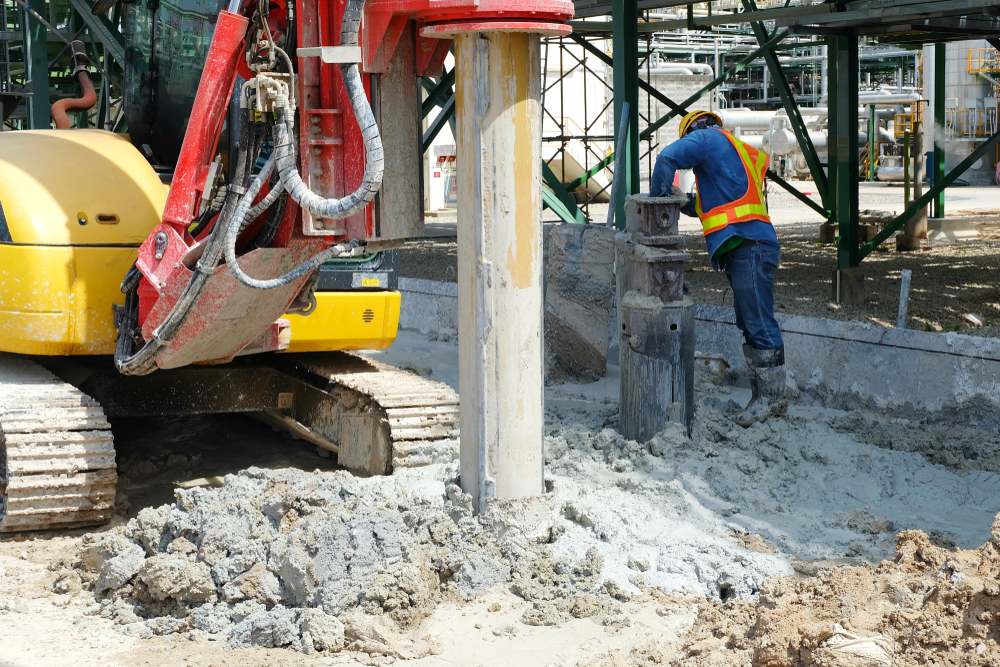The Definitive Guide for Geotechnical Engineering For Construction Projects
The Definitive Guide for Geotechnical Engineering For Construction Projects
Blog Article
The Greatest Guide To Geotechnical Engineering For Construction Projects
Table of ContentsGeotechnical Engineering For Construction Projects Things To Know Before You Get ThisGetting My Geotechnical Engineering For Construction Projects To WorkThe Definitive Guide for Geotechnical Engineering For Construction ProjectsFascination About Geotechnical Engineering For Construction ProjectsThe Best Guide To Geotechnical Engineering For Construction ProjectsSome Known Details About Geotechnical Engineering For Construction Projects Some Known Details About Geotechnical Engineering For Construction Projects
Concepts and Practice of Ground Enhancement. Ground Improvement Principles And Applications In Asia. Design analysis in rock mechanics.Cengage Understanding, Stamford, 666 p. Atkinson, J., 2007. The mechanics of dirts and structures. The Observational Approach in ground engineering principles and applications.
6 Easy Facts About Geotechnical Engineering For Construction Projects Described
Research laboratory and field testing plays an essential role in this procedure. By removing samples from the earth's subsurface and using a collection of examinations, geotechnical engineers can anticipate the behavior of dirt layers and review their suitability for different construction efforts. The essence of geotechnical engineering in civil design can not be overemphasized, attributable to numerous elements: The initial action in any type of geotechnical study involves identifying the soil kind at the building website.
Understanding these attributes guarantees that just suitable dirt types are selected for the development, therefore averting potential structural failures. The foundation serves as the bedrock of any kind of building and construction project. Selecting the proper structure type is a choice that hinges on the detailed evaluation given by geotechnical engineering. This ensures the long life and security of structures by suiting the loads they will bear.

Geotechnical website examination is a critical action in the preparation and execution of any type of building job. It entails the collection and analysis of information associated with the physical residential or commercial properties of soil and rock beneath a proposed construction website. This information is vital for the layout and building and construction of safe, steady, and lasting frameworks.
Not known Facts About Geotechnical Engineering For Construction Projects
, also known as subsurface expedition, entails a collection of activities aimed at establishing the dirt, rock, and groundwater problems at a building and construction site. The key purposes are to determine potential geotechnical hazards, analyze the design residential or commercial properties of subsurface materials, and provide suggestions for the design and building of structures, preserving wall surfaces, and various other frameworks.
The workdesk study helps in identifying potential geotechnical problems and intending the succeeding fieldwork. This involves observing the topography, drain patterns, existing frameworks, plant life, and any kind of signs of instability or erosion.
10 Simple Techniques For Geotechnical Engineering For Construction Projects
Shallow test pits are excavated to directly observe and sample the dirt and rock. This technique serves for studying the upper layers of the subsurface and identifying near-surface threats. Non-invasive geophysical methods, such as seismic refraction, ground-penetrating radar (GPR), and electrical resistivity tomography (ERT), are made use of to map subsurface conditions and find anomalies.
Dirt and rock samples gathered throughout the field examination are subjected to laboratory screening to establish their physical and mechanical buildings. These tests supply essential information for geotechnical analysis and design.
The main advantage of geotechnical site investigation is ensuring the safety and security and security of structures. By comprehending the subsurface problems, engineers can create structures and other structural aspects that can stand up to the tons and ecological pressures they will undergo. This minimizes the danger of negotiation, decrease, and structural failing.
Our Geotechnical Engineering For Construction Projects PDFs
For example, understanding soil features can lead the choice of excavation techniques, dewatering approaches, and ground improvement procedures. This makes sure efficient and safe building and construction techniques. Geotechnical site investigations are commonly needed by constructing codes and guidelines. Complying with these needs ensures compliance with lawful and safety criteria, staying clear of possible lawful responsibilities and task delays.
This details is indispensable for task supervisors, designers, and service providers in creating practical schedules, budget plans, and contingency strategies. Geotechnical Engineering for Construction Projects. High-Rise Structure in a Coastal AreaIn a coastal city, a skyscraper domestic structure was planned on a website with believed loose sand deposits and a high water table. A thorough geotechnical investigation, including borehole drilling, CPT, and geophysical studies, was performed
Geotechnical Engineering For Construction Projects for Beginners
Based upon these searchings for, the foundation layout was modified to consist of deep heap foundations expanding right into secure strata, and ground improvement strategies, such as vibro-compaction, were applied to alleviate liquefaction threats. This aggressive method made sure the safety and security and security of the structure while staying clear of costly post-construction removal. Infrastructure Growth on a Sloping TerrainA significant facilities task, involving the building of a highway and bridges, was intended on an uneven terrain with high inclines.

The Leaning Tower of Pisa (Italy), a legendary building marvel, is notorious for its unintentional tilt from substantial geotechnical issues. The tower's foundation was inadequately made to manage the soft, unpredictable dirt beneath it, bring about uneven settlement and its distinct lean. Our world is dotted with remarkable framework projectsfrom towering high-rises to stretching bridgesall standing testimony find here to the development of the various construction tools and techniques offered.
Geotechnical engineering is a customized area within civil design that concentrates on studying the habits of earth materials. This branch delves deep into the groundinvestigating exactly how the dirt, rock, and groundwater at a building website can influenceand be affected bythe facilities that we set up on and into them. Before a solitary block is laid or a concrete structure poured, geotechnical engineers probe into the earthgathering essential information about the website's soil structure, rock framework, and groundwater levels.
See This Report on Geotechnical Engineering For Construction Projects

is a tool used to examine the stability and load-bearing capacity of heaps during installation, leveraging the concept of wave breeding. It maximizes construction performance by providing real-time i thought about this assessments, therefore ensuring secure and reliable heap structures. One of the sensible applications of geotechnical engineering entails choosing and carrying out the best methods for foundation building.
Load driving represents greater than the mere act of putting structural elements into the ground. As a matter of fact, it is a meticulously coordinated procedure of transferring a structure's lots past the much less steady dirt layers better to the surfacedown to the a lot more substantial strata that exist below. In the instance of heap driving, take into consideration just how geotechnical engineers skillfully use this technique to equally distribute the framework's weight.
Report this page